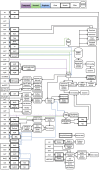Virulence Factors of Aeromonas hydrophila: In the Wake of Reclassification
- PMID: 27610107
- PMCID: PMC4997093
- DOI: 10.3389/fmicb.2016.01337
Virulence Factors of Aeromonas hydrophila: In the Wake of Reclassification
Abstract
The ubiquitous "jack-of-all-trades," Aeromonas hydrophila, is a freshwater, Gram-negative bacterial pathogen under revision in regard to its phylogenetic and functional affiliation with other aeromonads. While virulence factors are expectedly diverse across A. hydrophila strains and closely related species, our mechanistic knowledge of the vast majority of these factors is based on the molecular characterization of the strains A. hydrophila AH-3 and SSU, which were reclassified as A. piscicola AH-3 in 2009 and A. dhakensis SSU in 2013. Individually, these reclassifications raise important questions involving the applicability of previous research on A. hydrophila virulence mechanisms; however, this issue is exacerbated by a lack of genomic data on other research strains. Collectively, these changes represent a fundamental gap in the literature on A. hydrophila and confirm the necessity of biochemical, molecular, and morphological techniques in the classification of research strains that are used as a foundation for future research. This review revisits what is known about virulence in A. hydrophila and the feasibility of using comparative genomics in light of this phylogenetic revision. Conflicting data between virulence factors, secretion systems, quorum sensing, and their effect on A. hydrophila pathogenicity appears to be an artifact of inappropriate taxonomic comparisons and/or be due to the fact that these properties are strain-specific. This review audits emerging data on dominant virulence factors that are present in both A. dhakensis and A. hydrophila in order to synthesize existing data with the aim of locating where future research is needed.
Keywords: Aeromonas hydrophila; bacteria; comparative genomics; pathogenesis; phylogeny.
Figures
References
Publication types
LinkOut - more resources
Full Text Sources
Other Literature Sources
Molecular Biology Databases
Miscellaneous


